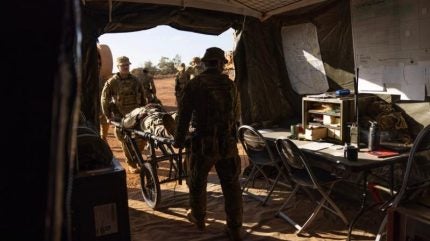
The Australian Ministry of Defence (MoD) disclosed details on 3 June 2024, of the deployment of a use manoeuvrable surgical medical treatment centre that was used in Exercise Rhino Run in May, before its scheduled completion in 2025.
The new Role 2 Basic facility allows treatment of personnel closer to the frontline, active “as far forward as a combat service support team”. The concept came online two years early by assembling new and legacy equipment.
According to Nato’s details on medical support from Nato’s logistics handbook, Role 2 support is normally provided at a larger unit level, usually of a Brigade or larger size, operating between Role 3 support, which functions at a Division level, and the medical support of a small unit conducted by a Role 1 unit. The new containerised treatment facility deployed at Rhino Run appears to retain the complex survey capability of a Role 2 unit, but at a scale and immediacy closer to a Role 1 facility.
The new facility fits inside two 6m containers, and can deliver nine types of damage-control surgeries. It is able to receive patients within an hour of set up, and operate at full surgical capacity within three hours, putting it ahead of current facilities by an order of magnitude, as a Role 2 Enhanced facility can take up to four days to become fully operational.
The facility, comprised of four tents in a cross formation, has capacity for a number of patients: it can manage resuscitation for two priority-one casualties; has capacity to conduct surgery on a single patient at a time; monitor two patients in an intensive care unit ward; and support five patients in low dependency beds.
While this amounts to a multi-tiered array of support, the Role 2 Basic is meant for acute care, aimed at treating soldier as quickly as possible from a forward position, bringing a capability for crucial medical procedures to injured personnel as early as possible. These damage-control efforts are a stop-gap before prolonged preservation surgeries can be administered elsewhere.





